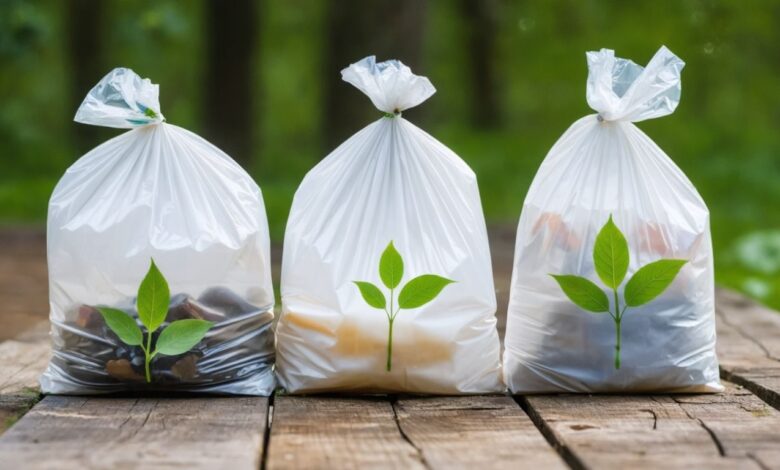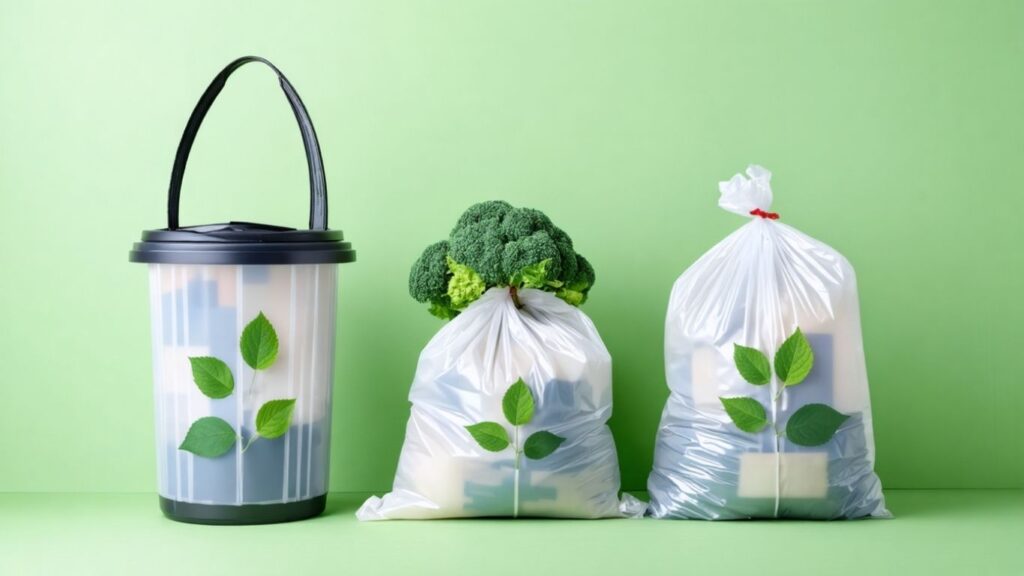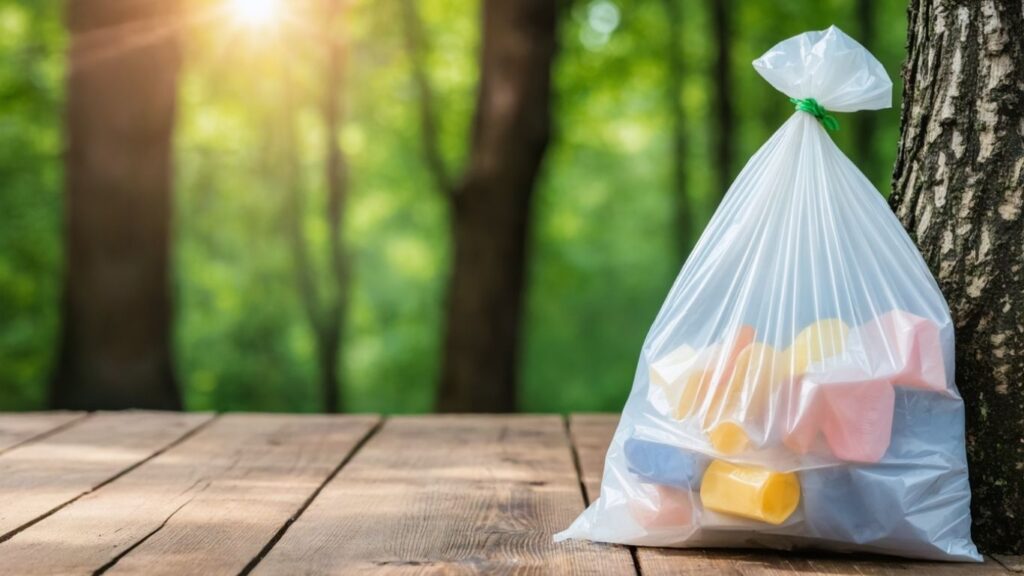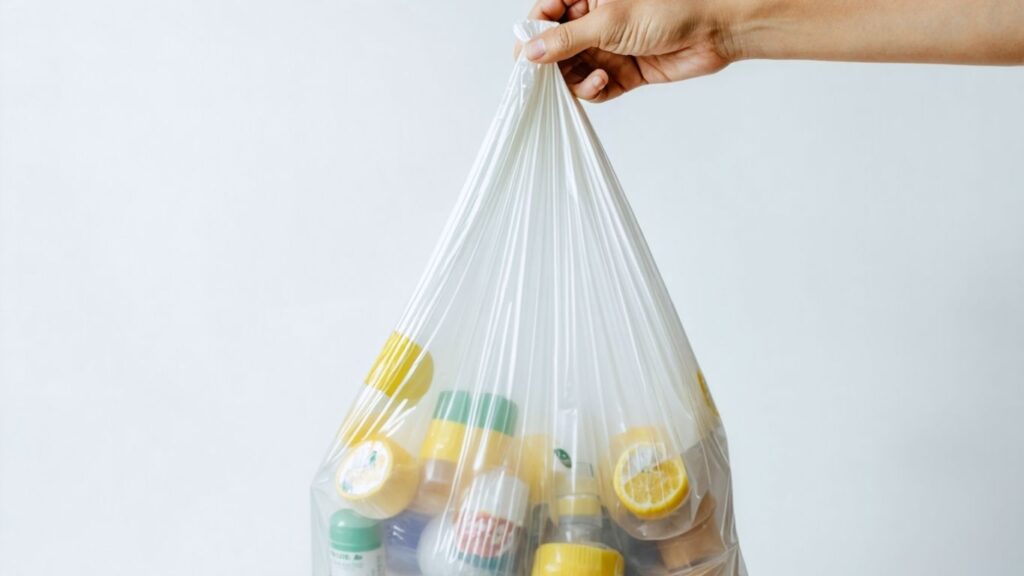Ditch Plastic for Good: Best Biodegradable Dustbin Bags You Can Buy Today

Introduction
Plastic waste continues to choke our environment, oceans, and wildlife. As we become more environmentally aware, there’s a growing shift toward sustainable alternatives, including biodegradable dustbin bags. These eco-friendly options offer a clean, green way to manage waste at home, in offices, and public spaces.
Consumers are now more informed and conscious about their environmental impact, and demand for sustainable waste disposal is rising globally. Switching to biodegradable dustbin bags is not only a small step for your household but a significant leap for environmental conservation.
What Are Biodegradable Dustbin Bags?

Definition and How They Work
Biodegradable dustbin bags are specially designed garbage bags that decompose naturally in the environment with the help of microorganisms, oxygen, and moisture. They break down into non-toxic byproducts such as water, carbon dioxide, and organic matter.
Unlike conventional plastic bags that remain in the environment for hundreds of years, biodegradable bags degrade over a much shorter period, reducing environmental pollution. This breakdown process is facilitated by exposure to natural elements like sunlight, air, and microbial activity.
Common Materials Used
Typical materials include:
- Cornstarch: A renewable and natural material that decomposes easily.
- PLA (Polylactic Acid): Derived from fermented plant starch, mostly from corn or sugarcane.
- PBAT (Polybutylene Adipate Terephthalate): A biodegradable synthetic polymer that enhances flexibility and strength.
- Cassava starch: Another plant-based component known for its eco-friendliness and fast decomposition rate.
These materials make the bags suitable for both composting and biodegradation, with some being more home-compost-friendly than others.
Why Switch to Biodegradable Dustbin Bags?
Environmental Benefits
- Reduces landfill waste: Biodegradable bags decompose in months, unlike plastic, which takes centuries. This prevents landfills from becoming overly congested and helps in managing municipal waste more effectively.
- Minimizes ocean pollution: Marine animals are less likely to suffer from ingestion or entanglement when biodegradable bags replace traditional plastic.
- Sustainable sourcing: These bags are made from renewable resources like cornstarch, cassava, or vegetable oils, reducing reliance on fossil fuels.
Health and Safety Advantages
- Non-toxic materials: Most biodegradable bags are free from harmful chemicals, making them safer for both humans and pets.
- No harmful microplastics: Since they break down naturally, biodegradable bags don’t leave behind microscopic plastic fragments that can enter the food chain or water supply.
Switching also helps create a cleaner indoor environment by eliminating the toxic fumes that sometimes emanate from plastic-based products, especially in enclosed spaces.
How to Choose the Right Biodegradable Dustbin Bags

Key Features to Look For
- Certifications: Labels such as EN 13432 (EU), ASTM D6400 (US), or OK Compost assure that the bag meets high standards for compostability and biodegradability.
- Thickness and Strength: A common concern is that biodegradable bags might tear easily. However, premium options are engineered to withstand household waste loads efficiently.
- Size Compatibility: Bags come in various sizes. Make sure to choose one that fits your trash bin perfectly to prevent overflows or slippage.
Home vs. Industrial Compostability
- Home compostable: These bags decompose in a backyard compost bin within 90–180 days, under natural conditions.
- Industrial compostable: These require controlled conditions like higher heat and humidity, typically found in commercial composting facilities.
Check the packaging to ensure your bag matches your disposal method. Using an industrial compostable bag in a backyard compost pile may result in slower or incomplete degradation.
Best Biodegradable Dustbin Bags on the Market (2025 Guide)
- UNNI 100% Compostable Bags – These BPI-certified bags are among the strongest and most durable, ideal for kitchen and yard waste.
- BioBag Kitchen Waste Bags – Perfect for organic kitchen waste, these bags are highly praised for their compostability and odor control.
- Hippo Sak Plant-Based Bags – Known for their high load capacity, leak-proof design, and plant-based formula.
- Green Earth Compostable Bags – EN 13432 certified, these bags are trusted for both home and industrial composting setups.
When selecting a brand, consider what kind of waste you’ll be disposing of, as some bags are more resistant to wet or sharp waste than others.
Common Misconceptions About Biodegradable Bags
- “They dissolve instantly.” False. While faster than plastic, biodegradable bags still need specific environmental conditions like moisture, heat, and microbial presence to break down.
- “Green color means eco-friendly.” Not necessarily. Some bags are colored green to appear eco-conscious but may not meet any certified standards.
- “They’re too expensive.” While the initial cost might be slightly higher, the long-term environmental and health benefits make biodegradable bags more cost-effective when you factor in ecological savings.
Another myth is that biodegradable bags are weaker. In reality, many premium brands match or exceed plastic in strength and reliability.
How to Dispose of Biodegradable Dustbin Bags Properly

Composting at Home
Cut up the bag and mix it with food and garden waste for faster composting. Ensure the compost pile is turned regularly and has the right moisture and air balance for effective decomposition.
For best results, place your biodegradable bags in the center of the compost heap, where microbial activity and heat are more concentrated.
What to Avoid
- Don’t toss biodegradable bags in general trash unless they are labeled as landfill-safe. Otherwise, they may not break down effectively in an anaerobic landfill environment.
- Avoid using them for hazardous waste such as batteries, cleaning chemicals, or sharps. These contaminants can interfere with composting and pose safety risks.
Also, avoid exposing unused bags to sunlight and moisture for long periods, as they might begin to degrade before use.
FAQs About Biodegradable Dustbin Bags
Are biodegradable garbage bags biodegradable?
Yes, certified biodegradable bags will break down under appropriate conditions.
How long does it take for biodegradable garbage bags to decompose?
Typically, 3 to 6 months in composting environments.
What are biodegradable bin bags?
They are waste bags made from organic materials that naturally break down.
How many biodegradable bags are in 1 kg?
This depends on the thickness and size of each bag. Usually 40–100 bags.
What are the disadvantages of biodegradable bags?
- Costlier than plastic
- Require specific conditions to decompose
- May not be suitable for heavy-duty waste
Why are biodegradable bags so expensive?
They use costlier raw materials and go through stricter production standards.
Is biodegradable better than plastic?
Yes. Biodegradable bags reduce pollution and decompose naturally.
What are the side effects of biodegradable waste?
If not disposed of correctly, they may release methane in landfills.
What is the lifespan of biodegradable plastic bags?
Shelf life is usually 12–18 months before they start degrading.
Do biodegradable bags dissolve in water?
No, they do not instantly dissolve in water unless specifically water-soluble.
What is the size of a 5 kg garbage bag?
Usually 45–50 cm in width and 60–70 cm in height.
Is biodegradable plastic cheaper?
Generally, it is more expensive than traditional plastic.
Are biodegradable bags safe?
Yes, they are safe for the environment and indoor use.
What size is a 50-litre bin bag?
Roughly 70 cm x 90 cm.
What are the raw materials for biodegradable bags?
Cornstarch, potato starch, PLA, PBAT, cassava, and other natural polymers.
What are the disadvantages of biodegradable materials?
They often need special disposal methods and have a shorter shelf life.
Is soap biodegradable?
Most natural soaps are biodegradable.
What is the strongest biodegradable material?
PLA mixed with PBAT is among the strongest available.
Are biodegradable bags expensive?
Yes, but costs are gradually decreasing as demand rises.
What are the negative effects of bioplastics?
If disposed of improperly, they may contaminate recycling streams.
What is the difference between plastic and biodegradable bags?
Plastic bags don’t break down easily. Biodegradable bags decompose into harmless elements.
What is another name for biodegradable waste?
Organic waste or compostable waste.
Is cake biodegradable?
Yes, cake is considered biodegradable organic waste.
What are the disadvantages of bio waste?
It can attract pests and generate odor if not managed properly.
How long do biodegradable bags take to decompose?
Between 90 and 180 days under ideal composting conditions.
What are two problems caused by biodegradable waste?
- Improper disposal may lead to methane release.
- Contamination of recycling systems.
Which 2 items are not biodegradable?
Glass and most synthetic plastics.
What toilet paper is biodegradable?
Most recycled and bamboo toilet papers are biodegradable.
Is PVC biodegradable?
No, PVC is not biodegradable.
Is Lifebuoy soap biodegradable?
Some versions are, especially the herbal or natural ones.
What is the future of biodegradable bags?
Growing demand, improved materials, and potential cost reductions.
Are biodegradable bags waterproof?
Some are, but many start degrading if exposed to water for extended periods.
Is biodegradable cheaper than plastic?
Currently, no—but the gap is closing.
What is the cost of bioplastic per kg?
Prices range from $2 to $6 per kg, depending on quality and region.
What type of bag is best for the environment?
Home-compostable biodegradable bags made from plant-based materials.
What is the benefit of using biodegradable bags?
They reduce landfill impact, pollution, and help sustain the environment.
What is the difference between compostable and biodegradable bags?
Compostable bags break down into soil-enriching matter; biodegradable bags decompose more generally but may not enrich soil.
Conclusion
Biodegradable dustbin bags represent a small yet powerful step toward a cleaner planet. With growing options in the market and increasing consumer awareness, making the switch is both easy and impactful. By understanding how these bags work, how to use them responsibly, and what to look for, you’re not just managing waste—you’re managing your ecological footprint.
Switch today, ditch plastic for good, and join the movement for a sustainable future.
CLICK HERE Buzznewsdaily




